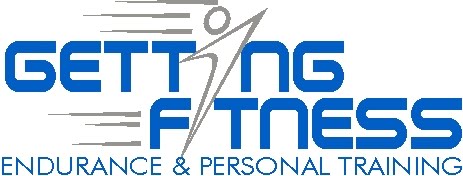In the next few posts I'm going to be covering the basics of different types of measures to use to optimize your training, including HR, RPE, and TT paces.
Training using your heart rate is the most commonly used method for training, and is the most accurate because "what you see is what you get". I like using heart rate because I can consistently monitor it, but it does take some discipline to stay within your zones depending on what your workout calls for. You can use a HR monitor, which you can pick up at your local sporting good store, or use your radial pulse(pulse on your wrist using your index finger and middle finger - although this is a kind of pain when you're running or doing any other aerobic activity.)
Now, how do we find this information?
Step 1) Max Heart Rate(MHR) - the easiest way to do this is take 220-your age.
Step 2) Resting Heart Rate (RHR) - when you wake up in the morning, before you get out of bed, take your pulse for 1 minute and write it down. Do this for 3 mornings in a row and take the average. Avoid caffeine, nicotine, or any non-prescription, heart rate altering medicine prior to taking your pulse.
Step 3) calculate your Target Heart Rate Zones using the following formula:
(MHR - RHR) * percentage effort + RHR
I'll use myself as an example to find my 80% effort at age 31 with a RHR of 50
220-31 = 189
(189 - 50) *.85 + 50 = 168.5 = 169
With the 220 method, your HR can be off as much as much as 10 bpm, so to find your true max heart rate use a VO2 Max test.
From a running perspective, if you're doing a long run your HR should be around 70-75%, for a tempo run it should be closer to 85%, and speed work ~90-95%.
Let me know if you have questions or thoughts.
Wednesday, April 15, 2009
Wednesday, April 8, 2009
New Direction, New Career?
So, I've been toying, well, truly considering a career change. I've been in corporate America for the past 6 years. This last January I started teaching a triathlon class, so I was busy from 5:45 AM - 5:00 PM, plus my own training. I was busy, but enjoying it. I have recently started personal training a few clients which makes for some long days, 5:45AM-8:00PM and trying to find time to fit in my training, and, more importantly, spending quality time with my wife and daughter. I haven't had any time to work on the web site, which is my ultimate career goal. (More on that on another post.). Plan A was to quit Corporate America, find a part time job, do personal training/triathlon training and work on the web site. I have been searching for an IT part time job for a few months and due to the economy I just haven't found much. (I don't think stirring sloppy joes at a local elementary school is in the cards for me :). So, how about quitting Corporate America, going to personal training full-time and work on the web site at night? This is the path I'm seriously exploring. The big caveat here is, as all personal trainers know, the job is 75% sales, 25% training. I would need at least 5-6 months, realistically, to build up a clientele that I could come remotely close to my current income. I have a few ideas of how I could cover income for a few months. Anyone have any input, similar experiences? Any advice would be greatly appreciated.
Wednesday, April 1, 2009
Your questions
As we get closer to the season, I want to help answer your questions about endurance sports. If you want to email me or reply to this post I'll be happy to answer any questions you have. To help trigger some thoughts, here are some topics:
Periodization
Dam to Dam training
race nutrition
transitions
open water swimming
recovery
weight training and endurance sports
I look forward to your questions.
Periodization
Dam to Dam training
race nutrition
transitions
open water swimming
recovery
weight training and endurance sports
I look forward to your questions.
Subscribe to:
Posts (Atom)
